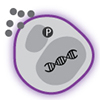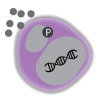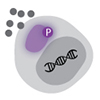Signal transduction refers to cascading networks of biochemical reactions that convert extracellular signals into appropriate cellular responses. Learn the steps and factors involved in major signaling pathways with our interactive maps. Then utilize our antibodies and specialized reagents to explore each stage and component of your pathway of interest.

 Study the signals
Study the signals
Recombinant proteins – Recombinant proteins can be used to stimulate signaling pathways that lead to cell activation, differentiation, and/or proliferation. Investigate signaling mechanisms with our highly active and stable cytokines, chemokines and growth factors.
LEGENDplex™ – Simultaneously quantify up to 13 soluble analytes from biological samples using flow cytometry. Select from predesigned LEGENDplex™ assays to characterize the types of signals your samples contain.
 Characterize the receptors
Characterize the receptors
Characterize the expression of signal receptors on the cell surface with primary antibodies validated for multiple applications, including TotalSeq™, which utilizes antibody-oligo conjugates and single-cell RNA sequencing to capture the complete receptor profile of individual cells.
 Detect cytoplasmic signaling proteins
Detect cytoplasmic signaling proteins
After receptors receive the signal at the cell surface, they transmit the signal by recruiting and activating cytoplasmic proteins. Detect the presence of important signaling proteins inside the cytoplasm with antibodies validated for western blot (by specificity testing on knockout samples) and for immunocytochemistry.
 Detect protein modifications
Detect protein modifications
Phosphorylation of proteins is used in many signaling pathways to relay messages. Browse antibodies to detect expression of kinases and phosphatases, enzymes that respectively add and remove phosphate groups to/from proteins.
Phosphorylated proteins can be an indicator of pathway activation and kinase/phosphatase activity. Maximize detection of signal transduction with True-Phos™ Perm Buffer and our highly specific anti-phospho antibodies.
 Identify the cellular response
Identify the cellular response
Many signaling pathways ultimately result in activation or suppression of transcription factors and other nuclear components that regulate gene expression. Identify the type of response induced by signals with antibodies that detect nuclear markers.
 Login/Register
Login/Register 






Follow Us